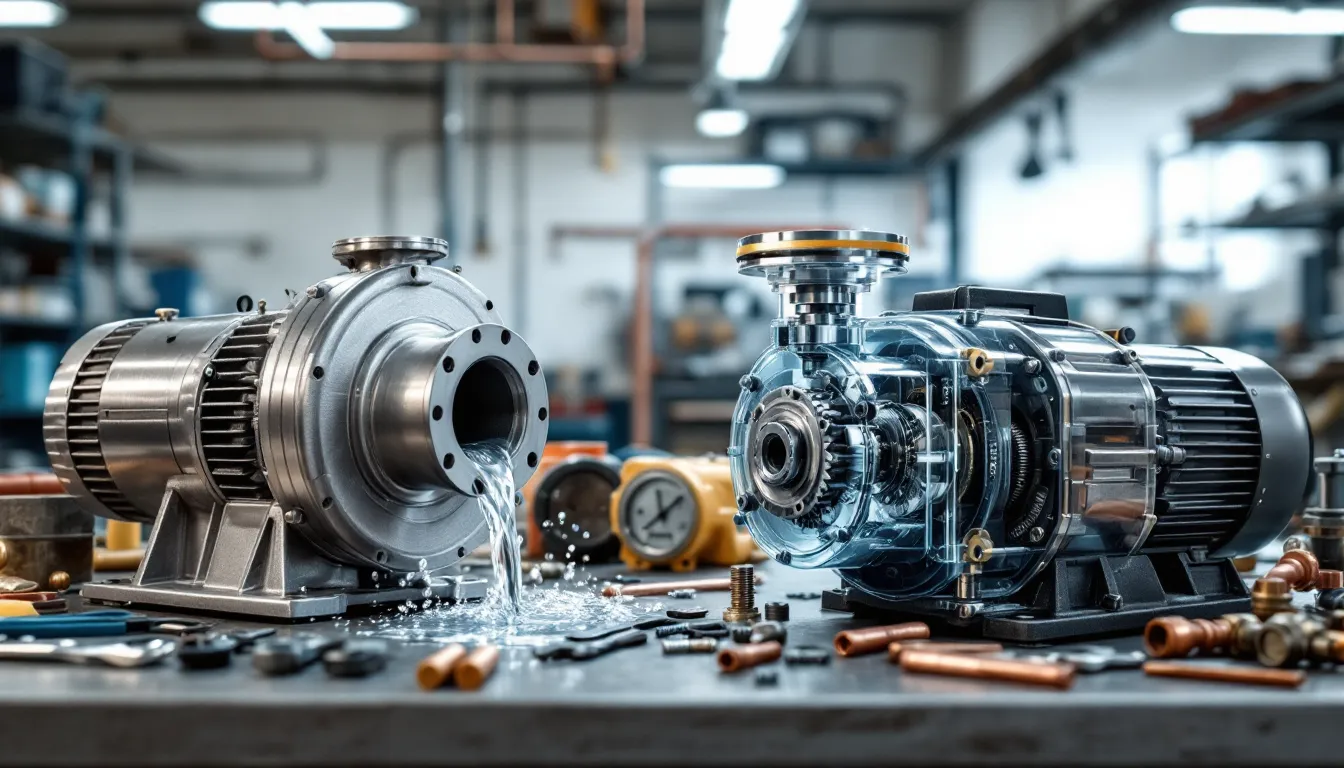Key Takeaways
- Role of the Water Pump: The water pump is crucial for circulating coolant in vehicles, preventing engine overheating and ensuring efficient performance.
- Common Locations: In vehicles, water pumps are typically located at the front center or side of the engine, while some unique designs may place them in the rear engine bay.
- Types of Water Pumps: The two main types are centrifugal pumps, known for high flow rates and continuous flow, and positive displacement pumps, which deliver consistent output and are effective at high pressures.
- Importance of Location: Knowing where water pumps are located in both vehicles and homes enhances maintenance efficiency, helps in troubleshooting overheating or leaks, and aids in performing timely repairs.
- Regular Inspections: Routine checks on the water pump can identify signs of failure, such as leaks or unusual noises, which are essential for preventing costly repairs.
- Adaptation for Specific Needs: Understanding different water pump types and their locations allows for better selection and maintenance, catering to varied applications in vehicles and home systems.
When it comes to maintaining your vehicle, knowing the location of key components is essential. One such component is the water pump, which plays a crucial role in keeping your engine cool. If you’re experiencing overheating issues or coolant leaks, pinpointing the water pump’s location can save you time and hassle.
Typically, you’ll find the water pump mounted on the front of the engine, often driven by the timing belt or serpentine belt. However, its exact position can vary depending on the make and model of your vehicle. Understanding where to look not only helps in troubleshooting but also aids in performing routine maintenance or repairs. Let’s dive into the details and help you locate that vital component with ease.
Understanding Water Pumps
Water pumps play a crucial role in your vehicle’s cooling system. They circulate coolant through the engine and radiator, preventing overheating. Familiarizing yourself with the location of the water pump aids in troubleshooting and maintenance.
Typically, you’ll find the water pump at the front of the engine, bolted to the engine block. Its position may differ based on the vehicle make and model. Some common placements include:
- Front Center: Often seen in inline engines, situated along the engine’s midline.
- Front Side: Common in V-shaped engines, placed on either side of the engine block.
- Rear Engine Bay: Present in some designs, particularly in mid-engine or rear-engine vehicles.
The water pump connects to the engine using a timing belt or serpentine belt. Regular inspections and maintenance help ensure optimal performance. If you’re experiencing overheating issues or coolant leaks, checking the water pump’s condition remains essential. Understanding the signs of a failing water pump, such as strange noises or leaks from the pump area, can save you from costly repairs.
Types of Water Pumps

Understanding the different types of water pumps helps you choose the right one for your application. The two main types are centrifugal pumps and positive displacement pumps.
Centrifugal Pumps
Centrifugal pumps utilize rotational energy from a motor or engine to move water. They feature an impeller that spins, creating a low-pressure area that pulls water in through the inlet and pushes it out through the outlet. Centrifugal pumps are efficient for transporting large volumes of water and are commonly used in irrigation, water supply, and cooling systems. Key characteristics include:
- High Flow Rates: They can handle substantial water transfers.
- Continuous Flow: Designed for steady water movement.
- Self-Priming Models: Some can prime themselves, reducing setup time.
Positive Displacement Pumps
- Constant Flow: Delivers consistent output, even with varying pressure.
- Variety of Designs: Available in gear, diaphragm, and screw types, catering to specific needs.
- Effective at High Pressures: Suitable for high-viscosity fluids or applications involving high pressure.
Locating the Water Pump
Identifying the location of the water pump is crucial for effective maintenance and troubleshooting. Water pumps are common in both homes and vehicles, each with specific locations.
Common Locations in Homes
Water pumps in homes serve various purposes, such as supplying water or draining basements. Common placements include:
- Basements: Submersible pumps often sit in pits to remove excess water.
- Crawl Spaces: Sump pumps are commonly used here to manage groundwater.
- Well Houses: Pressure pumps are typically found near well systems to deliver water to the home.
- Outdoor Areas: Surface pumps may be located near gardens or pools for irrigation purposes.
Water Pump Locations in Vehicles
In vehicles, water pumps play a critical role in engine cooling by circulating coolant. Common locations include:
- Front Center of Inline Engines: Many inline engines position the pump centrally for optimal accessibility.
- Front Side of V-Shaped Engines: V-shaped engines often locate the pump on one side for better integration with the engine’s design.
- Rear Engine Bay in Mid-Engine Vehicles: Some mid-engine or rear-engine designs place the pump at the back, providing a unique layout that enhances weight distribution.
Understanding these locations helps you address maintenance and repairs effectively.
Importance of Water Pump Location
Knowing the location of your water pump is crucial for effective maintenance and timely troubleshooting. In vehicles, maintaining engine cooling hinges on the water pump’s placement. Locations vary: inline engines often feature pumps at the front center, V-shaped engines typically place them at the front side, and some mid-engine or rear-engine designs incorporate them in the rear engine bay. Recognizing these placements allows you to address potential issues, such as overheating or coolant leaks, and perform regular inspections to ensure optimal performance.
In homes, water pumps serve multiple purposes, making their locations equally important. Submersible pumps sit in basements to remove excess water, while sump pumps manage groundwater levels in crawl spaces. Pressure pumps usually reside near well systems for efficient water delivery, and surface pumps serve outdoor irrigation needs. Understanding these locations aids in effective maintenance and emergency response.
Familiarity with various types of water pumps also enhances your ability to address specific needs and challenges. Centrifugal pumps utilize rotational energy for efficient circulation, ideal for high flow rate applications. Positive displacement pumps offer consistent flow regardless of pressure variations, making them suitable for high-viscosity fluids and elevated pressure situations. Knowing which type and where each pump resides helps in selecting a suitable unit and performing necessary maintenance or repairs.
Conclusion
Knowing where your water pump is located is essential for effective maintenance and troubleshooting. Whether in your vehicle or home understanding its placement can save you time and money. Regular inspections and being aware of signs of a failing pump can prevent unexpected issues and costly repairs.
By familiarizing yourself with the different types of water pumps and their specific locations you’ll be better equipped to handle any challenges that arise. This knowledge empowers you to ensure optimal performance whether you’re managing engine cooling or maintaining water flow in your home. Stay proactive and keep your systems running smoothly.

Hi, I’m Md Rofiqul, a gardening enthusiast who loves spending time in the garden and backyard. I enjoy caring for plants, growing flowers and vegetables, and creating a green space that feels peaceful and refreshing. Gardening is more than just a hobby, it’s a passion that connects me to nature and brings joy to my daily life. Living with plants inspires me to embrace simplicity, patience, and sustainability while making every day more colorful and rewarding.
